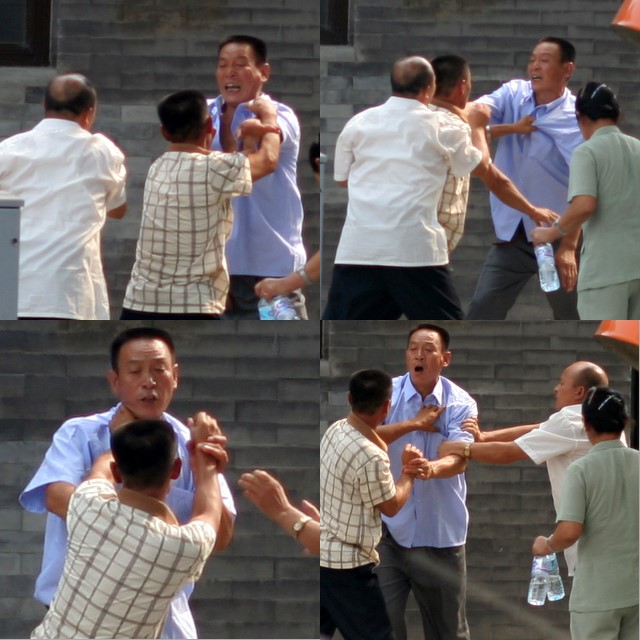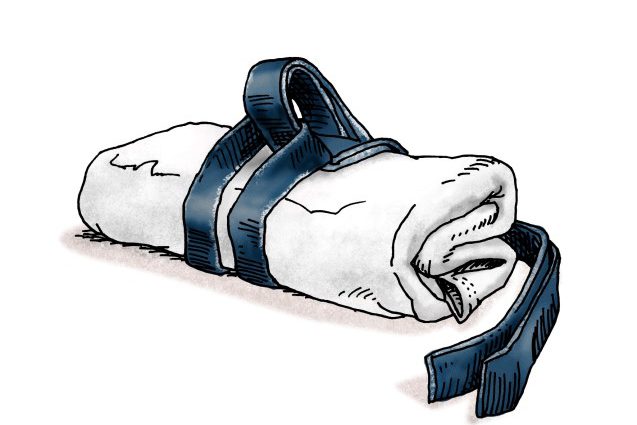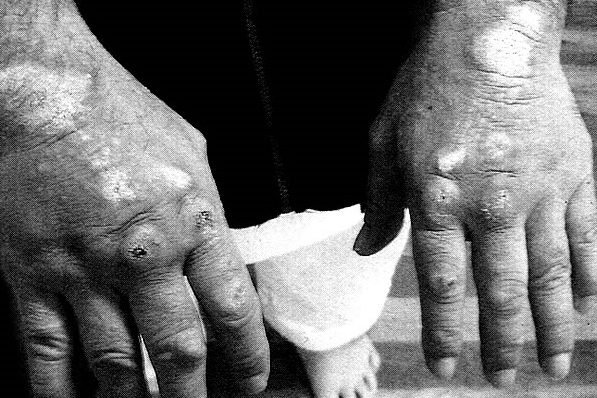So, I’m sitting on the plane right now, on my way home from spending yet another two awesome months in beautiful Okinawa – the birthplace of Karate.
During my stay I did a lot of stuff, as always, and some of it I wrote about here. But mostly I just trained. Because that’s why I go there.
To train.
Yes, yes, I know, some people go to Okinawa to take pictures of themselves training, while others go there without training at all – not even stepping their foot into a real dojo – but that’s not my steez. I hardly take any pictures, and I step my feet practically everywhere. Which turns out to be both good and bad.
As the Japanese saying goes, “you’ll never catch the tiger’s cub if you don’t enter its cave” (koketsu ni irazunba koji wo ezu).
One place where I spent a considerable amount of time was the Budokan. For those who don’t know, the Okinawa Kenritsu Budokan (as it’s officially named) is a public sports complex built specifically for the martial arts, which means you’ll see all kinds of groups practising there: MMA, Karate, Taekwondo, Kobudo, Kendo, Thai Boxing, Judo, Naginata, Tai Chi, BJJ… you name it.
A group I particularily liked to watch was the aikido people.
Aikido is cool. But I found it interesting that although they often got the “soft” stuff down really well (i.e. the rolling, throwing, taisabaki, circular/spiraling movements and such), their “hard” movements surprisingly often lacked any hint of power or strength.
I’m not trying to be disrespectful in any way, but they really looked like softies.
Seriously, these guys couldn’t even do push-ups. Not a single one. Sure, they were adults indeed, but they looked more like drunk college kids dry humping the ground on Spring Break every time it was time to do ten push-ups (which they did every class)!
Of course I found this difficult to watch, being the super strong and super handsome athlete you know me as (what? hey, don’t give me that look!)
I mean, you would imagine that being strong in the muscles of the core (which is what real push-ups is all about) should be considered important in a martial art that incorporate a lot of wide lateral movements, quick lifting, non-stop throwing, falling, rolling and flying action – like aikido.
Yes?
Apparently, no.
So, as you probably realize, the sloppy “karate-style” punches they were continually practicing defenses against (with their wide assortment of spectacular throws) could probably not even emergency-punch them out of a wet paper bag on a rainy day. They were basically just extending their arm in some lame attempt at copying what they believed constituted a real karate punch – something they had most likely never cared to properly investigate or study beforehand.
In other words, week after week, month after month, year after year – these guys are practicing their “defenses” to potentially life threatening situations purely based on assumptions about the nature of the attacks they are supposed to be defending against.
It’s tragic.
But…
So are we.
(Yeah. I said it.)
We’re JUST as tragic.
Question: When was the last time you “investigated” the haymaker? When was the last time you “studied” the sucker punch?
These aikido people might not be able to successfully defend themselves against a real, full force, straight on karate-style punch (since they never train against one) but can you defend yourself against a blurry shadow in the corner of your eye? Against a quick flash, a loud shout, and then a big “BANG”?
Because that’s all there is.
Then either you or your newly found enemy is KTFO’d.
Boom.
A split second.
Real life.
Self-defense.
No bs.
No time to put on a gi, tie a belt, take your shoes and sock off, remove your glasses, take your watch off, warm up, stretch a little, sip some water, get into a ready position and watch your equally prepared opponent in the eyes before you assume a perfect zenkutsu dachi ‘kamae’.
Forget it.
You know it’s not happening.

All you “get” is something blurry in the corner of your eye, and if you’re really lucky perhaps a glimpse of a furious face – before a flurry of fists comes flying your way. And hey, that’s not even the worst case scenario. You might be attacked without even noticing that much beforehand.
The thing is, in self-defense, or on the infamous ‘street’, only one person is ever prepared for what’s about to go down – and you’d better believe that’s never going to be you.
Never.
Because if you are, you won’t have to resort to fighting in the first place.
It’s like when this brown belt from our dojo once asked me why we never practice self defense from the usual kumite range he sees on YouTube (WKF Sport Karate style). So I said “please, let me demonstrate”. As soon as he got into the traditional ‘kamae’ ready position a couple of meters in front of me, I immediately turned around and ran out of the dojo in silence.
He stood there completely speechless.
(Sucker!)
Because that’s what you do.
It’s the only sensible thing.
In fact, if you have the luxury of facing your opponent square on, from the usual dojo kumite range, with your hands up, while being fully aware that something is going to happen any second now, then every moment you’re not running away to safety is another moment for somebody to get a first class ticket to the hospital.
Or, even worse: the mortuary.
Let’s pray that’s not you or your friends/family.
But of course, you already knew this. You know it, your sensei knows it, and his sensei’s sensei knew it. We all know that if somebody is going to attack you (again, on the mythical ‘street’), it’s probably never going to be straight punch trauma to the solar plexus (what we in Karate refer to as oi-zuki, or jun-zuki.). More likely, it’s going to be wild, swinging punch trauma to the left side of your face, somewhere in the triangle formed between your ear, chin and temple. After that, it’s grabbing time, and then it’s rolling time.
And I didn’t make this up.

Youtube taught me.
Police reports, crime witness databases, medical reports statistics… they all taught me.
It’s all there and it’s all public for everyone to read. Just Google ‘crime statistics’ and you’re on your way too.
It is a fact that if you are ever going to get attacked in real life, it’s going to be unlike anything you’ve ever encountered in the average Karate dojo anywhere on this planet.
Which is a problem.
(Unless… you’re not average).
Because, I mean, even though practicing endless 1-step, 2-step and 3-step combinations against straight punches (and kicks!) sure is a lot of fun (and great for coordination!) wouldn’t it be even more fun to know that in the case of a “shiitake-hit-the-fan” situation you could at least have some sense of confidence in your self-defense skills?
Huh?
Or, is teaching these kinds of skills simply too much to ask of all the Zenkutsu Sensei™ out there? I agree, it’s indeed hard to get full power in a haymaker when you need to have the back leg perfectly straight and the front leg bent in a 90 degree angle all the time!
But if you have time to come up with elaborate excuses why to not practice real life attacks (such as the haymaker) along with the various defenses against it, then you have plenty of time to STFU and train instead.
Show me a Karate-ka that encounters a perfectly clean straight punch to the chest (or face if you want to live on the wild side!) in the local pub/disco/bar/wherever-a-statistically-significant-amount-of-idiots-dwell and I’ll show you a Karate-ka that lives in LaLa land.
Because no such situation exists.
Unless you are – and I find this highly unthinkable – actually attacked by another Karate-ka, skills honed to perfection by years of practising his deep, straight, stepping zenkutsu dachi punch against his mates in the dojo.
Bottom line: Snap back to reality.
And no, I know, I know; your dojo might not train these types of things. In fact, most plain vanilla Karate dojo don’t. They surely don’t do in Okinawa. And certainly not in mainland Japan!
It’s sadly not a part of our (modern) tradition anymore.
But that doesn’t mean you can’t practise it.
You can do it both.
It has been said that the strength of the most robust thinkers is the ability to hold two opposing ideas in the head at the same time. Can you do that? The world is too nuanced for you not to. If you can’t think for yourself on different levels, what you take for granted will keep you running through other people’s mazes instead of making progress on your own goals, such as, you know, being awesome at Karate.
And I would like for you to be awesome, my friend.
Remember the aikido guys I wrote about in the beginning? Yeah. They were supposed to be a bad example. They had lost their connection to awesomeness a long time ago. We can’t let that happen to us. And just because you wear Karate pants instead of a black samurai skirt doesn’t make your situation any different.
At least that’s what I think.
Now go do some research.
You might owe it to the future health of yourself and your loved ones.



42 Comments